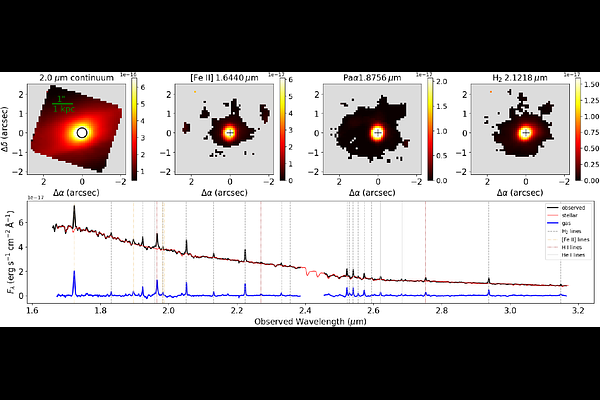Blowing Star Formation Away in AGN Hosts (BAH) -- IV. Serendipitous discovery of a $z\sim2.9$ star-forming galaxy lensed by the galactic bulge of CGCG\:012-070 using JWST NIRSpec

Blowing Star Formation Away in AGN Hosts (BAH) -- IV. Serendipitous discovery of a $z\sim2.9$ star-forming galaxy lensed by the galactic bulge of CGCG\:012-070 using JWST NIRSpec
Rogemar A. Riffel, Carlos R. Melo-Carneiro, Gabriel Luan Souza-Oliveira, Rogério Riffel, Cristina Furlanetto, Santiago Arriba, Marina Bianchin, Ana L. Chies-Santos, José Henrique Costa-Souza, Maitê S. Z. de Mellos, Michele Perna, Thaisa Storchi-Bergmann, Nadia L. Zakamska
AbstractWe report the detection of a gravitationally lensed galaxy by the nearby spiral galaxy CGCG 012-070 ($z = 0.048$) using Integral Field Unit (IFU) observations with the Near-Infrared Spectrograph (NIRSpec) instrument on board the James Webb Space Telescope (JWST). The lensed galaxy is identified through the flux distributions of emission lines in the rest-frame optical, consistent with a source located at a redshift of $z\sim2.89$. The system is detected in [O III]$\lambda\lambda4959,5007$, H$\beta$, and H$\alpha$ emission lines, exhibiting line ratios typical of a star-forming galaxy. The emission-line flux distributions reveal three distinct components, which are modeled using an elliptical power-law (EPL) mass profile for the lens galaxy. This model provides a good characterization of the source and reveals a disturbed star-forming morphology consistent with those of galaxies at cosmic noon.